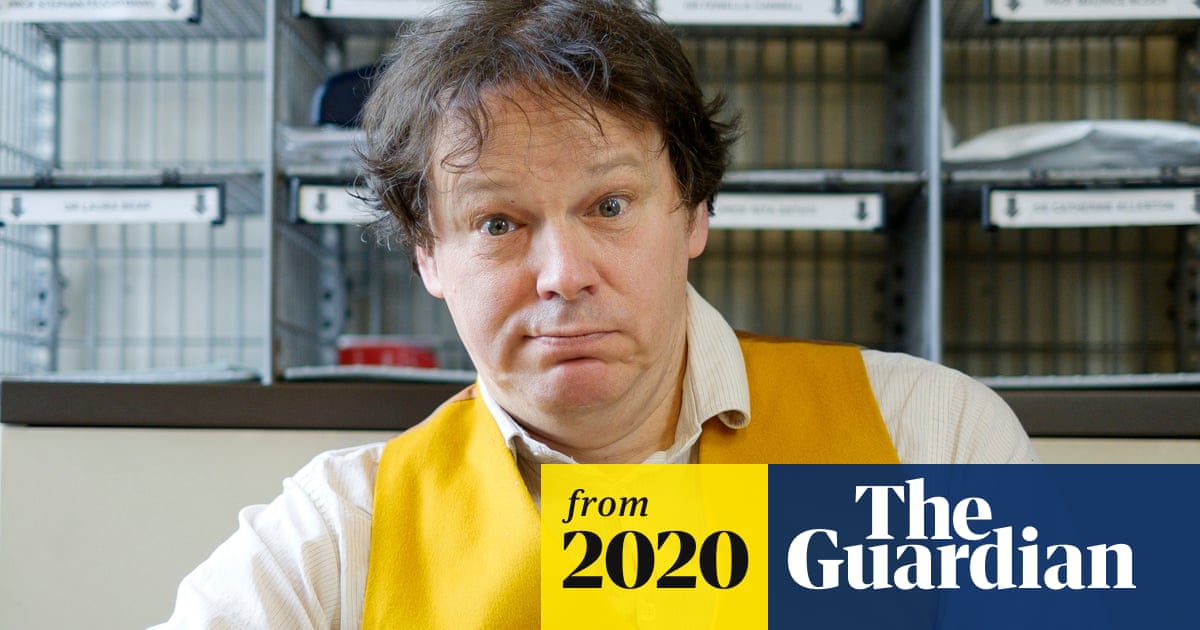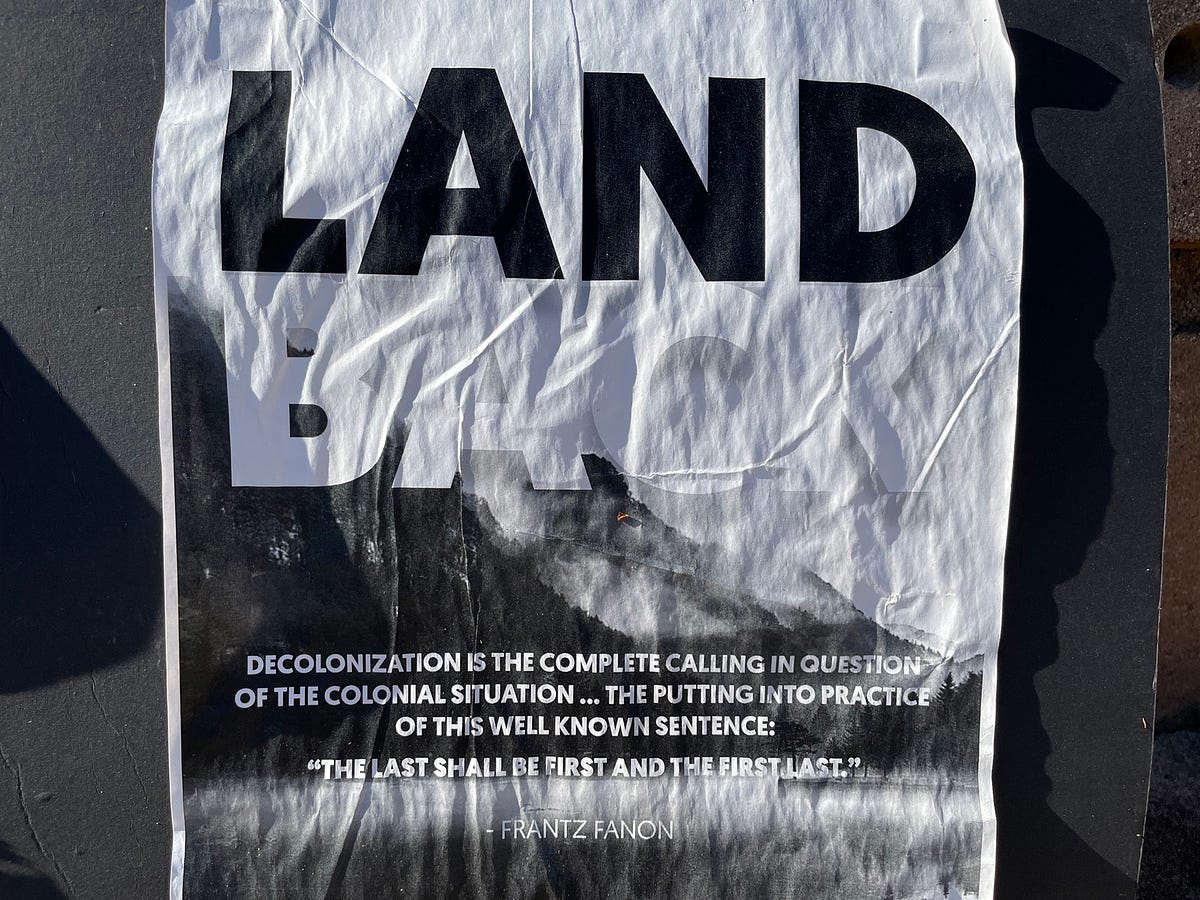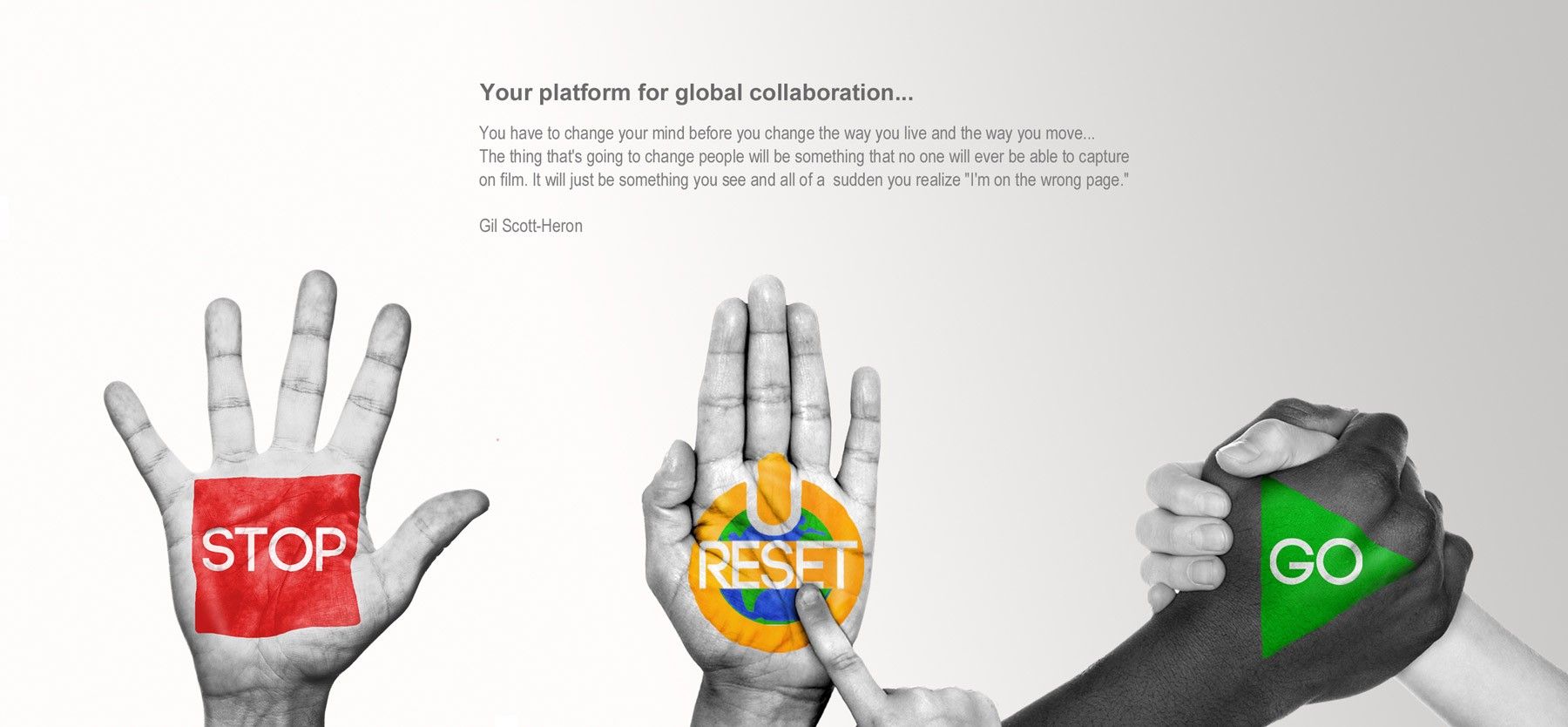The Art of Noticing
The art of noticing is in contrast to paying attention. It is an approach for a wholistic human experience—perception, cognition, emotion, and action—that reorients time, energy, and resources toward what really matters.

When paying attention benefits only the 1%
Because I belong nowhere, but am an integral part of everything, I operate in the liminal spaces between large groups of sameness and homogeneity. Oddly, I find myself drawn toward the centre of institutions while at the same time being regarded as a threat to these centres of power. As an agent of change, I deliberately challenge authority, and very often, I must deal with the fall out that results as I face the consequences of my actions.
As in chess, we make decisions and while we might regret certain choices and actions, there is no other way but to take the next best step.
There is a strategy, but there are also failures. The mistakes become learning experiences. When there are multiple fields of play, the complexity of the systems becomes overwhelming. There is a danger of paralysis. The paralysis of analysis.
If I am not at the centre, responsible for every major decision, I can operate more freely at the edges of the boundaries between entities. In this way, I can potentially maximize the edge effects that lead to greater possibilities for innovation and creativity.
Beginning, Middle, End
Life is a process, and the only thing that we can really be sure of in life is change. As we notice the beginnings of the end of the empires of the 20th century, we can respond with a desperate grasping to maintain aging institutions that have devolved into self-serving hierarchies attempting to maintain the status quo through social control, economic security, and political power.
What we know about all empires is that they will fall. They have been built on the false premise of a steady state theory, on permanence, on the enduring promise of scale, efficiency, and strength. The pyramid structures of hierarchical systems may build architecture that stands the test of time, but the social, economic, and political systems ultimately became cultures of death, leaving only lifeless shells and skeletal structures to mark their brief time on the Earth.
What remains?
The remains of these societies are the biological, social, economic, political, technological, and ecological adaptations that have been integrated into the genetic information, social behaviours, and intellectual cultures of living systems.
It is important, then, to notice the flow of energy that enables the health, growth, learning, maturity, death, and decay that becomes the nutrient-rich soil for new forms of life.
It is important that we not lose sight of our role in each of these different stages of life. Death is an important part of the process. Our initial—and natural—response to each of these stages is fear. While we experience uncertainty and ambiguity in the face of the unknown, it helps to know that others have gone before, and we can learn from the wisdom we have received from interactions with parents, teachers, and mentors. The Earth and the Universe itself are also our mentors. We have much to learn from everything around us, but we have failed to notice, because we have our noses in books, and our bodies oriented toward flat screens that provide the illusion of infinite knowledge, while we become less and less capable of realizing our social influence, economic capacity, and political agency.
The empire wields control through mechanisms of colonial power and corporate control, through metaphysical design. To maintain peace, security, and order, the preferred state of a population is homogeneity, predictability, and domestication. This is achieved through learned helplessness, trained incapacities, and bureaucratic intransigence. The mechanisms for this level of social control are a social, economic, and political environment immersed in propaganda and a universal metric for the value of work: money.
The means of achieving such dominant control over a global population is through a strategy of disempowerment: individualism, specialization, and authoritarianism.
It is interesting to note the level of indoctrination when proposing that corporations be outlawed. The knee-jerk reaction is, “To outlaw corporations is impractical.” Of course, such a response is natural when we have been conditioned to believe that there are no viable alternatives. But it is just that: a belief.
If you want to make systemic changes, you need to be able to question the system. If you are only interested in making incremental changes to the existing system, you will protest any considerations of the system itself. You will appeal to the law and declare that it is immutable. If people question the law, they are ignored, silenced, or imprisoned, as they threaten the social, economic, and political order.
You might even create an information ecology that overwhelms the senses with so many PR, advertising, marketing, editorial, and political messages that there is little possibility to consider any alternatives. If it is possible to create an artificial social environment that reinforces the behaviour that we, as social, economic, and political individuals are mere conduits of these same messages, it is possible to create a totalizing ideological environment that negates the possibility of critiquing the system, as such messages are obscured by the volume of messages that are oriented toward the more profitable activity of amusing ourselves to death.
Individualism
Individualism is a social control that separates and isolates us from ourselves, each other, from nature, from Earth, from the universe, creating a sense of learned helplessness. We are left asking, What, as an individual, can I do to change things?
That is by design.
Specialization
Specialization is an economic control that limits mobility within a hierarchical system of roles defined by the efficient operation of a bureaucratic and siloed system of work. People are organized into a class hierarchy related to the value each person adds to corporate equity. We tell each other, Stay in your lane.
That is by design.
Authoritarianism
Authoritarianism is a political control that provides an illusion for individual autonomy, mastery, and purpose through freedom of choice. However, the choices are artificially limited by the design of the social, economic, and political systems. Individuals lose the ability to organize outside of the corporate structure. By maintaining a focus on the performance of representative democracy through broadcast media and the social division manufactured around key points of ideological disagreement, social solidarity movements are effectively disempowered. Although the 1% can easily be overpowered by the 99%, the population is effectively domesticated as wage slaves and servants of their corporate masters.
If we realized our evolutionary advantage as a species was our ability to listen, to show empathy, to nurture, to be compassionate, to share resources, knowledge, wisdom, and experience, and to cooperate and coordinate our actions together, we could easily refuse our labour to those who would take advantage of us. But we have been domesticated.
That is by design.
Colonization
If you had not noticed, these are the strategies used by monarchs to assert control over foreign territories as they engage in a war of attrition to overwhelm the existing Indigenous populations in the occupied territories by attacking supply chains.
In so-called Canada, the British strategy of colonization and domestication of the existing populations on Turtle Island was to eliminate the sources of food, clothing, shelter, tools, and spiritual practices: beavers, buffalo, caribou, and passenger pigeons. Then, they engaged in a process of cultural genocide, outlawing the sharing economy and the transmission of language, and removing children from their families. These strategies involved starvation, sexual violence, murder, lynching, imprisonment, exile, and war to remove the existing inhabitants and clear the land for settlement by white Christians, based on the justification of the Doctrine of Discovery, the papal bull of 1493.
Corporations
The corporate structure is an extension of the colonial and imperial power of monarchs that has become palatable to the citizens of the nations. The nations were formed by the arbitrary decisions of monarchs, aristocrats, and industrialists to carve up the map of the world into territories of control and domination. It is a global empire of feudal lords who have come to an agreement on the means of maintaining social, economic, and political power through the mechanism of money. Wars are waged, not with conventional military campaigns, but through economic strategies to control supply chains and manipulations of legal, market, and political systems. The generals and majors are economists, bankers, lawyers, politicians, and corporate executives.
Money is power only because humans give it more power than it is owed. Money is a story that we tell ourselves about who has value according to their proximity and access to capital. Thus, money is a manufactured metric for human value. Without money, a human being is, according to this system of values, worthless.
When I say that corporations should be outlawed, I mean that the entire system is a construction of a despotic, monarchical, colonial, genocidal power structure that is at its heart psychotic and dehumanizing. To value people on the basis of money is an injustice. The whole system is corrupt. If I argue to make only incremental changes to this system, I must conclude that it is either that I am so deluded that I cannot see the trap that I have fallen into, or I am benefiting in such a way that I don’t actually want to change the system. I am the problem.
Dawn
Yesterday (October 26, 2021), I picked up David Graeber’s book, The Dawn of Everything: a New History of Humanity, written with David Wengrow, at Coles in Abbotsford.
It is interesting to note that David Graeber was interested in the origins, the beginnings.
Renowned for his biting and incisive writing about bureaucracy, politics and capitalism, Graeber was a leading figure in the Occupy Wall Street movement and professor of anthropology at the London School of Economics (LSE) at the time of his death.

Dusk
Micah White wrote of the end: The End of Protest.
Micah White is the award-winning activist who co-created Occupy Wall Street, a global social movement, while an editor of Adbusters magazine.
Occupy Wall Street was a constructive failure but not a total failure. Occupy demonstrated the efficacy of using social memes to quickly spread a movement, shifted the political debate on the fair distribution of wealth, trained a new generation of activists who went on to be the base for movements ranging from campus fossil fuel divestment to Black Lives Matter protests. Occupy launched many local projects that will have lasting small-scale impact. Occupy buoyed many institutional activist organizations that were able to materially profit from the renewed interest in protest. All of these are signs that our movement was culturally influential. It may be comforting to believe that Occupy splintered into a thousand shards of light. However, an honest assessment reveals that Occupy Wall Street failed to live up to its revolutionary potential: we did not bring an end to the influence of money on democracy, overthrow the corporatocracy of the 1 percent or solve income inequality. If our movement did achieve successes, they were not the ones we’d intended. When victory eluded Occupy, a world of activist certainties fell apart.
I call Occupy Wall Street a constructive failure because the movement revealed underlying flaws in dominant, and still prevalent, theories of how to achieve social change through collective action. Occupy set out to “get money out of politics,” and we succeeded in catalyzing a global social movement that tested all of our hypotheses. The failure of our efforts reveals a truth that will hasten the next successful revolution: the assumptions underlying contemporary protest are false. Change won’t happen through the old models of activism. Western democracies will not be swayed by public spectacles and mast frenzy. Protests have become an accepted, and therefore ignored, by-product of politics-as-usual. Western governments are not susceptible to international pressure to heed the protests of their citizens. Occupy’s failure was constructive because it demonstrated the limitations of contemporary ideas of Protest. I capitalize p to emphasize that the limitation was not in a particular tactic but ratter in our concept of Protest, or our theory of social change, which determined the overall script. Occupy revealed that activists need to revolutionize their approach to revolution.
Failure can be liberating. Defeat detaches us from a theory of revolution that is no longer effective, reopening the possibility of true change. “For a revolutionary,” writes Régis Debray, professor of philosophy and associate of Che Guevara, “failure is a springboard. As a course of theory it is richer than victory: it accumulates experience and knowledge.”
(The End of Protest, pages 26-27)
Day
Today, I am thinking about the Foundation series, written by Isaac Asimov and recently released as a TV series on Apple TV+. The story is about the fall of the Galactic Empire. The focus is on the Foundation community that seeks to preserve the wisdom necessary to maintain a complex, technologically advanced, and flourishing human civilization.
The Empire maintains the status quo through the cloning of the emperor, always represented in three forms, Dawn, Day, and Dusk.
Bad Art Friend
At the same time, I am thinking about the focus of The New York Times podcast, The Daily, this weekend, which was an audio version of The New York Times Magazine article, Who Is the Bad Art Friend?.

Bad Design Friend
In my mind, there are some striking similarities in these stories to my recent experiences with the Graphic Designers of Canada. I detail the events in a series of articles I wrote on Medium to document the group dynamics in authoritarian hierarchies and human social circles.

I find the deference to power in such groups particularly frustrating, but predictable. But, I also have to wonder whether I am the bad design friend by not behaving as expected, being a team player in a traditional social and professional business association.
As an executive board member of the BC Chapter of the GDC, I called into question the purpose and strategy of the organization, noting a possible structural failure that could be addressed in the roll out of a brand identity during a national identity crisis, while unmarked graves were being discovered at so-called Indian Residential Schools. For that I was immediately expelled, unceremoniously, without due process, by a few members at the top of the hierarchy. True, my approach might have been a breach of the professional conduct of a designer, as I was also addressing the validity of copyright law, in contrast to the value of open source collaboration. As the lowly newcomer, though a paying member of the organization for 27 years, there was not much recourse. What I found particularly astounding, though not surprising, was how quickly I was ghosted by the majority of the members of the group.
It was a telling reminder of the domestication of the Canadian settler population, and how effectively the behavioural and cultural conditioning had rendered them helpless, incapacitated, and intransigent.
All I could conclude was that these were not the kind of friends that I needed at this moment in my life.
Chunky Monkeys
Inside the curious case of Dawn Dorland v. Sonya Larson, we learned of the group dynamics in a writing community. A disagreement over copyright and plagiarism turned into a costly legal dispute that has yet to be resolved.

I chose instead to shake the dust off my sandals and leave to avoid wasting my time and money on such a dispute. I was merely testing a theory that change was not likely in this design association. Although, we were ostensibly in the business of change, this volunteer organization was demonstrating an inability to welcome change into its midst. My presence would be a thorn in their side. Plus, the resistance that I was facing to introduce alternatives and innovation were not worth the aggravation.
I could be far more effective in exile.
Foundation
Hari Seldon poked Empire in the eye and was exiled. He predicted the end of the Galactic Empire and immediately, the façade began to crack.

Fiction and Non-Fiction
Design is a rich man’s world. The organizations in which I have worked as a designer have primarily been led by white men.
Without rich patrons, how can an artist survive? We recently visited a couple art experiences in the Vancouver area. One experience focused on the work of Vincent Van Gogh. The other celebrated the work of Leonardo Da Vinci.
Van Gogh did not experience success in his lifetime. Rather, his work has been celebrated posthumously, and others have become rich from his creative expression.
Da Vinci was supported by wealthy patrons, who had a profound influence on the subject matter of his artistic, engineering, and biological explorations. Much of his career was financed by the war effort of his time, and Da Vinci focused much of his energy on inventing war machines.
It is striking to me just how precarious one’s work can be when choosing enlightenment and imagination over the pragmatical and practical work of serving the empire of the day.
Stop Reset Go
Here, then is what I am noticing. Through a synergy that has developed by considering the whole unpredicted by the parts taken separately, I have stumbled into a group of people who are learning to coordinate their actions together to mobilize humanity to engage in the process of whole system change.
As COP26 approaches, we are afraid that we are not being effective, efficient, and productive in our efforts to make a global impact, to build a solution that will address the multiple system crises that humans have caused through their activities on the Earth: biological, personal, social, economic, political, technological, and ecological.
In attempting to address the progress traps, imagining that we can solve all of these crises with the same technologies that created them, we might be forgetting that the change that is required is both a human inner transformation and a social outer transformation. We are dealing with that basic sense that we ourselves are separate from everything that surrounds us.
This is not an easy change to make. Change might take time. Change might not depend on us.
What are we resetting?
If anthropocentrism, separation, individualism, specialization, and authoritarianism are the problems that we need to solve, where would we start to achieve the changes required by multiple systemic crises?
We can only change ourselves. But knowing how humans behave, how mimetic desire is a means of behavioural contagion, when we change ourselves, we can change the world. We have examples of people who have done just that.
Festina lente
In our Design Science Studio session this week, we heard the phrase, festina lente: make haste slowly.

This was in the context of the massive systemic changes required to achieve drawdown and the seventeen Sustainable Development Goals that are addressed by Project Drawdown in one hundred proposed solutions to reimagine our social, economic, and political systems to achieve the ecological equilibrium necessary to remain within the finite limits of the Earth’s physical resources.
Physical and Metaphysical Design
I have little optimism for humanity’s prospects to make the changes necessary within the existing paradigms.
However, my optimism comes from an awareness of the ability of living systems to adapt to crises. The proof of such an idea is in the fact of our existence as a species. It has taken billions of years for the universe to manifest the ability to perceive itself and the vast complexity and diversity of reality, to remember the past, be aware of the present, and to conceive of the future, to feel the wonder of life, and to be able to act with empathy, nurturing, and compassion for the fragility of the life entrusted to our care.
We have the tools to realize that we can project our intentions into the future and build our own realities. However, we have yet to learn to regulate our emotions and our behaviours in such a way that we can collectively coordinate our actions at a global scale without causing greater harms for ourselves and for the other living beings with which we share this planet.
We would not give nuclear weapons to a toddler, yet, as a species, we are only beginning to develop our abilities to collectively regulate our emotions, even though we have invented a global nervous system that is scaling, increasing, and accelerating our capacities at such a rate that the changes have surpassed our ability to adapt, and the unintended consequences are beyond our control.
The shift in our attention must be toward those things that we can control: our perceptions, cognitions, emotions, and actions. This is the totality of human experience.
While we have been focused on our tools over the past century, building the infrastructure and architecture of the physical world, we have neglected the metaphysical world.
Humans have created a metaphysical world that appears to be an extension of our physical brains. The East and West hemispheres of the Earth appear to represent the cognitive/emotional divide that we are learning about through brain science and cognitive behavioural therapy. Western philosophy is analytical, rational, objective, and disembodied while Eastern philosophy is intuitive, emotional, subjective, and embodied.

Through the accident of birth, we have inherited metaphysical systems that tend to determine a cultural bias in our orientation to the world. Yet, through a more holistic conception of human experience, it is possible to synthesize and integrate these separate worlds, creating a more healthy whole through synthesis.
When we focus on the increasing quantity of life, we tend to sacrifice the quality of life. The physical is what we can quantify, and that is what we tend to measure with money. The metaphysical is the quality of life, and that is what we tend to measure with love.
Metaphysical design is concerned with that which we cannot quantify, that which allows us to live fully. If we are all designers, we should all be participating in metaphysical design. If we leave that to the 1%, we get the systems that we have inherited. If all of us get to design the system, it can work for all of us. That means the Earth also gets a say in the process. The universe has already been regulating the living systems of the planet. Are we able to learn from the Earth?
Maybe no one has ever asked you, How would you design the world? If that was everyone’s job, no one would be out of work. There is enough work to go around. Unemployment and homeless are evidence of a lack of imagination, not to mention compassion.
True democracy is representative and participatory. This is not something that happens once every four or five years. This is something that happens moment by moment every day. Take back your power.
Metaphysical design is a process to coordinate our actions together in a world where every human being has:
- Social influence
- Economic capacity
- Political agency
Consciousness and Awareness
As we are becoming more self-conscious and self-aware, we need to extend that consciousness and awareness to others. Becoming more whole would require allowing humans to develop with a full awareness of their social influence, economic capacity, and political agency.
If we could enjoy the full spectrum of human experience rather than the cultural bias that we have inherited, would we be more mature and whole human beings?
- Social: individual-collective
- Economic: specialist-generalist
- Political: hierarchy-network
We have been presented with an incomplete list of choices, a false dichotomy. To value life means to respect each unique individual and value collective solidarity amidst the complexity and diversity of all of life on Earth.
Balance
Restoring balance to the Earth requires restoring balance to ourselves. If we lean too far one way or the other, we fall down.
Where should we start?
Calm
Let’s first slow down and calm down. Let’s take a breath and take ourselves out of the constant state of stress, fear, and panic that drives violent, irrational, and self-destructive behaviours.
Decenter
When we decenter ourselves, we can focus on the needs of others in a way that we can learn empathy and respect for the experiences of each other.
Regeneration
We can learn from nature how the technologies that the universe has developed over billions of years are able to regenerate. Our attempts to control nature are ultimately self-destructive. When we destroy other species, we are destroying our own life support systems. If we allow life to flourish, we will thrive. Nature is not separate from us. We are nature. We are the Earth.
Relationship
By slowing down, we can observe what nature does best: life. Our efforts to replace nature with mechanical servants is actually the problem. When we become servants of nature, we become more aware that nature already exists to serve us. We can renew our relationship with ourselves, each other, and the living beings all around us. By healing our relationship with nature, we heal our relationship with ourselves.
Reciprocity
At the core of our relationships together is the concept of sharing. We are all sharing this Earth together. It is the flow of energy between all living beings that contributes to the flourishing of life. Another way to put that would be the flow of love. Birds do it. Bees do it. We are even learning that trees and fungus do it. We are all sharing resources through invisible connections.
Our economies should make all of those invisible connections visible, so that we can see that it really does take a village to raise a child, or a living universe to grow humanity into a more mature and generous version of itself.
A Journey on Spaceship Earth
We are in the process of pulling together the threads between the New European Bauhaus, the Bauhaus Movement, the Green New Deal, and the Design Science Studio and Living Systems Collaboratory in partnership with the Buckminster Fuller Institute and habRitual’s experience with ontological design at Burning Man.
That is only my small area of consciousness and awareness. Join us in the art of noticing, so we can have a clearer, more complete picture of the challenges we are facing. If each of us is able to fulfill the potential we have, rather than living with the artificial scarcity that has been imposed upon us by the systems we inherited, imagine what we could do together. Individually, we are helpless. Together, we have changed the weather. What if we were more conscious and aware of what we are doing?
Stop Reset Go

We can:
- Stop the harms
- Reset our values and intentions
- Go change the world
Join us on the journey to make a world that works for all of life.
We can shift from paying attention to large corporate monopolies, helping them get bigger, richer, and more powerful.
Instead, let’s engage in the art of noticing how beautiful life is, how wonderful it is to share love with each other, how the Earth already provides everything we ever needed.





